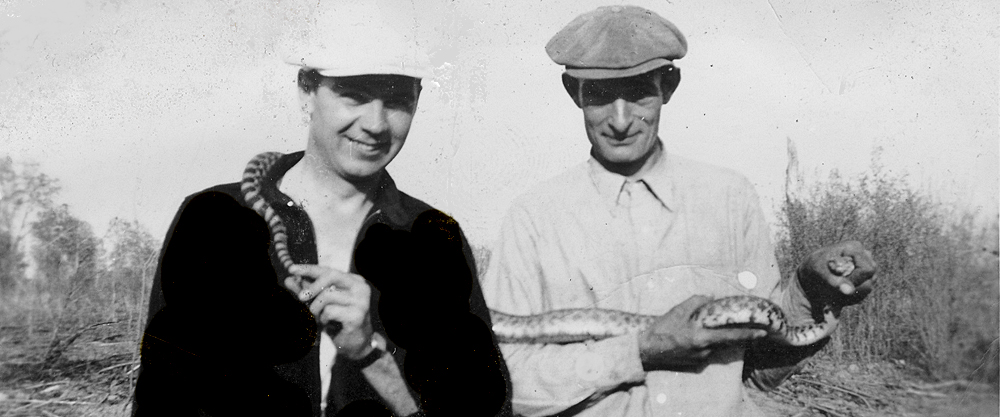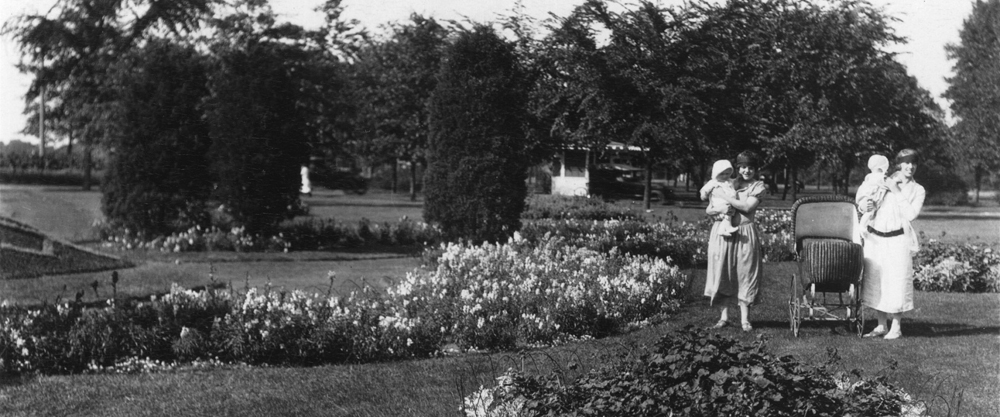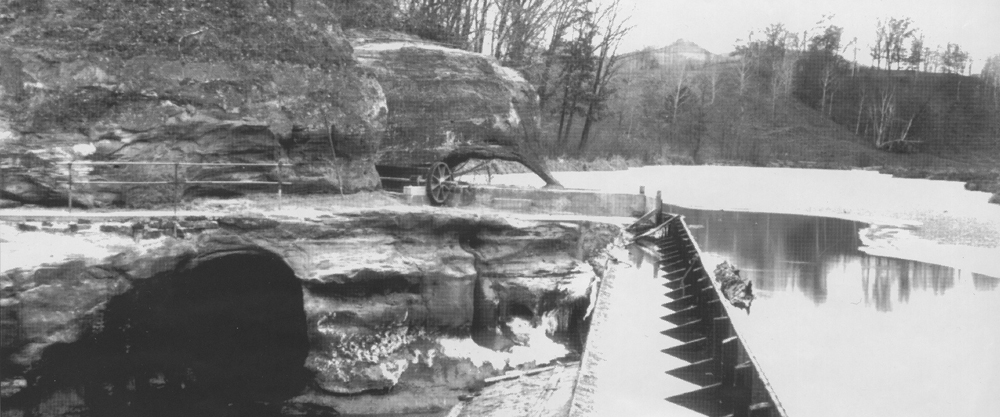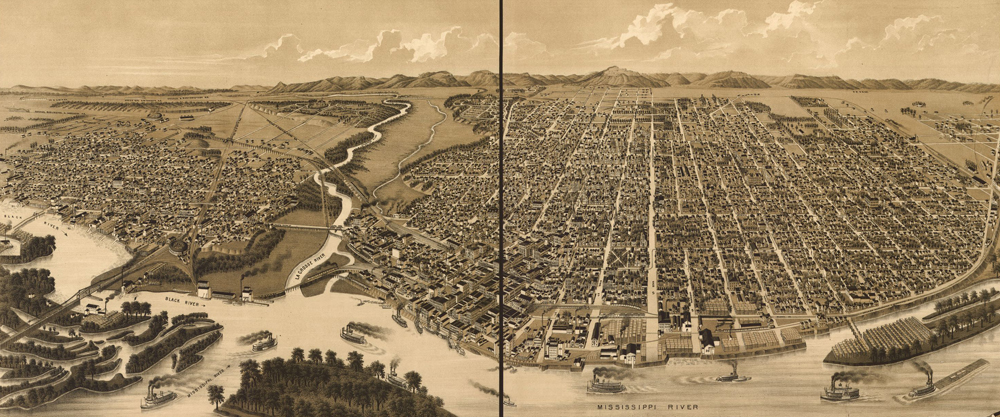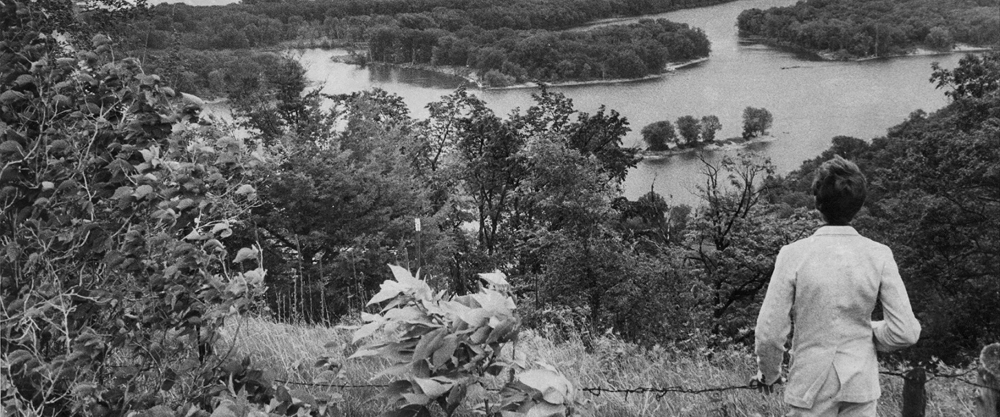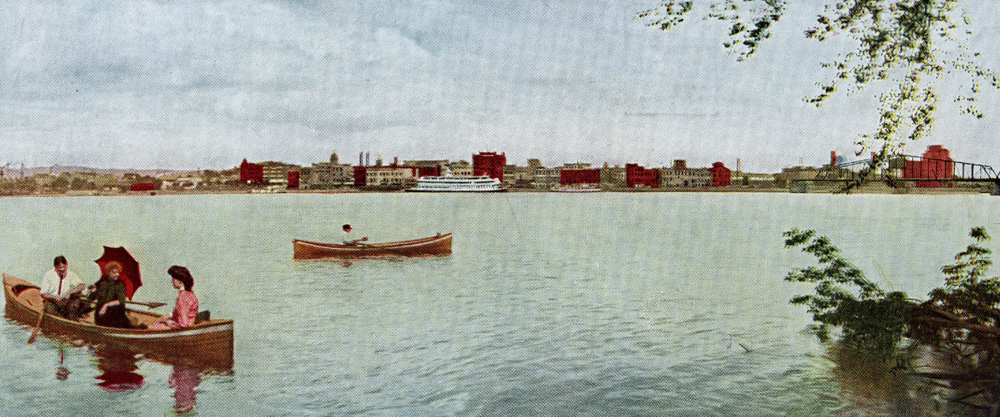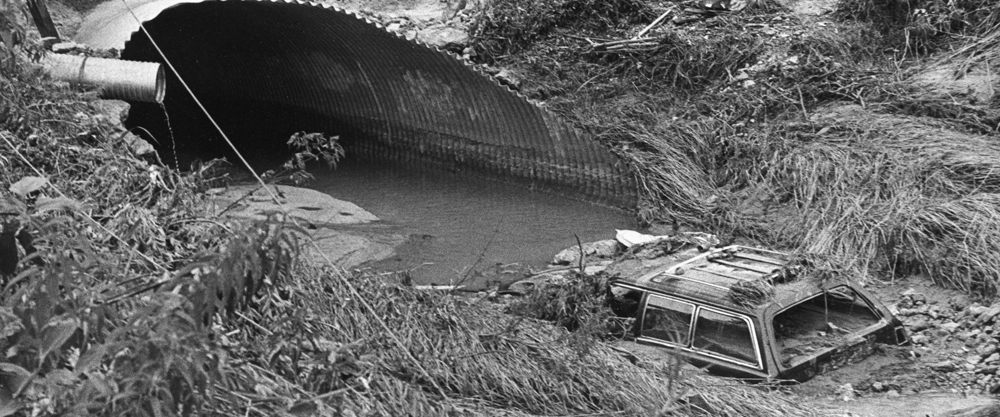LA CROSSE HISTORY
unbound
THE LA CROSSE AREA'S HISTORY, DIGITIZED
Fauna

Unbound Collections
- Browse All Titles
- Formats
- General Histories
- Area Genealogy
- Accidents & Disasters
- Agriculture
- Archaeology
- Architecture
- Arts & Music
- Businesses & Industries
- Cemeteries
- Economy
- Education & Schools
- Events & Festivals
- Government
- Health & Healthcare
- Historic Sites
- Literature
- Military & War
- Natural Environment
- Neighborhoods
- Organizations
- Parks
- Peoples & Cultures
- Politics
- Press & News Media
- Religious Groups
- Sports & Recreation
- Transportation
Resources
—Fauna—
Creator:
Harris, Paul
Description:
The purpose of this study was to observe the birds of Myrick Marsh in order to determine (1) the species utilizing the marsh as breeders, (2) the transients using the marsh as a resting area, (3) the nonbreeding residents, (4) which species used the marsh as a wintering area and (5) the relative abundance of species observed. Various census routes were established and followed for the duration of the study. Mist nets, funnel traps and Potter traps were used to capture birds for the purpose of banding. A total of 164 individuals belonging to sixteen species were banded. Banding was used to start a long-term project to determine the recurrence of species in the marsh during successive years. Nesting birds were determined by locating singing males, deserted nests and observations of young birds. A total of 150 species were observed with 51 species breeding in the marsh. Of the 150 species, twelve are permanent residents, eighteen winter residents, forty-six transient visitants,forty-three summer residents and thirty-one summer visitants. Three methods were used to determine the relative abundance; Kendeigh, Bond, and number per man-hour. Both the Bond and Kendeigh methods were almost identical in ranking the observed species. Relative abundance varied with the three methods but Red-winged Blackbird (Agelaius phoeniceus) and Tree Sparrow (Spizella arborea) were ranked number one according to each method during the seasons in which these species were dominant. A diversity index was used as a quantitative method in comparing the various seasons. Diversity was dependent on the number of species and individuals observed for each season. Diversity was low during the summer and winter and higher during the spring and fall migrations. A total of fifteen orders were represented with 55.1% of the observed species belonging to the order Passeriformes. A geographical origin of the Myrick Marsh avifauna according to Mayr was also made in order to determine the composition of the avifauna when compared with a different region of the country. The data shows an increase in the number of unanalyzed species as one moves toward the northern latitudes due to increased nesting activity and the presence of more species during the summer.
UW-L Master's Thesis
UW-L Master's Thesis
Author:
Agricultural Experiment Station, University of Wisconsin
Creator:
Medler, John Thomas
Carney, D. W.
Carney, D. W.
Description:
Cover title.; Includes bibliographical references (pages 41-42).
Research bulletin / University of Wisconsin, Agricultural Experiment Station ; 240; Research bulletin (University of Wisconsin. Agricultural Experiment Station) ; no. 240.
Research bulletin / University of Wisconsin, Agricultural Experiment Station ; 240; Research bulletin (University of Wisconsin. Agricultural Experiment Station) ; no. 240.
Creator:
Fago, Don
Hine, Ruth L.
Hine, Ruth L.
Description:
A statewide survey of the inland waters of Wisconsin was initiated by the Bureau of Research, Wisconsin Department of Natural Resources to establish a comprehensive data base on the distribution and relative abundance of all fish species. The Grant and Platte, and Coon and Bad Axe, and LaCrosse river basins were sampled from 1975 through 1982 by personnel from research at 327 stations, from fish management at 14 stations, and from U.S. Fish and Wildlife Service at 2 stations. An additional 124 stations were partially sampled by fish management personnel.
Technical bulletin (Wisconsin. Department of Natural Resources), no. 136, 140, 143, 147, 152, 155, 159, 175.
Technical bulletin (Wisconsin. Department of Natural Resources), no. 136, 140, 143, 147, 152, 155, 159, 175.
Creator:
Bendickson, O.S.
Description:
This study was undertaken to examine the mortality rates for the eggs and nestlings of small passerines. The Red-Winged Blackbird (Agelaius phoeniceus) was selected because of the availability of nests in the area. A marsh located on Goose Island about seven miles south of La Crosse, Wisconsin was used as the specific study site. The nesting period was examined from the first part of May until the middle of July. The results indicated an egg survival of 84%, a nestling survival of 60%, and an overall survival of 46%, with 35% of the active nests successfully fledging young. The egg and nestling survival produced a negatively skewed curve indicating a higher mortality for nestlings than for eggs, but when this data was added to adult survival it produced a positive skewed curve. A review of other studies showed wide variations in nesting success of Red-winged Blackbirds. Further studies should attempt a correlation of environmental data with nesting success.
UW-L Seminar Paper
UW-L Seminar Paper
Author:
United States. Fish and Wildlife Service, National Fishery Research Laboratory
Creator:
Littlejohn, Susan K.
Holland, L.
Jacobson, R.
Huston, M.
Hornung, T.
Holland, L.
Jacobson, R.
Huston, M.
Hornung, T.
Description:
Item donated by the Upper Mississippi River Conservation Committee (UMRCC) to Murphy Library in 2018. Part of the UMRCC Collection housed at Murphy Library, University of Wisconsin-La Crosse.
Author:
U.S. Fish and Wildlife Service, National Fishery Research Laboratory
Creator:
S. Littlejohn
L. Holland
R. Jacobson
M. Hudson
T. Hornung
National Fishery Research Laboratory (La Crosse, Wis.)
L. Holland
R. Jacobson
M. Hudson
T. Hornung
National Fishery Research Laboratory (La Crosse, Wis.)
Description:
Introductory guide to identifying fish, their habits and habitats in the Mississippi River
20 pages, [1] folded leaf of plates : illustrations ; 23 cm
20 pages, [1] folded leaf of plates : illustrations ; 23 cm
Author:
Upper Mississippi River Conservation Committee
Creator:
Rahn, Michael
Description:
Item donated by the Upper Mississippi River Conservation Committee (UMRCC) to Murphy Library in 2018. Part of the UMRCC Collection housed at Murphy Library, University of Wisconsin-La Crosse.
Creator:
Michael C. McInerny
Description:
The impact to the fishery of Navigation Pool No. 9 of the Mississippi River from impingement and entrainment processes by two Dairyland Power Cooperative power stations in Genoa, Wisconsin, was determined. Impingement samples were taken once each week for a 24 hour period from 8 August 1978 through 30 June 1980 at both plants. Sampling devices, comprised of galvanized hardware cloth, were used to strain screen wash water to determine impingement rates. Entrainment sampling was conducted once each week for a 24 hour period from 26 February 1979 through 10 September 1979 and 6 February 1980 through 30 June 1980. Entrainment rates were determined by straining water from tapped intake pipes with plankton nets. Impingement survival tests, stress tests, and ichthyoplankton surveys were also taken to further define the impact of entrainment and impingement. An estimated 8,390 (127.1 kg) and 54,349 (2915.7 kg) fish were impinged during this study at La Crosse Boiling Water Reactor. (LACBWR)and Genoa #3 (G-3), respectively. The two power stations collectively impinged representatives of 53 species and 19 families of fish. The most frequently impinged species of fish were bluegill (Lepomis macrochirus), freshwater drum (Aplodinotus grunniens)., gizzard shad(Dorosoma cepedianum) and channel catfish (Ictalurus punctatus). Young-of-the-year fish density, behavioral responses of some species of fish and intake structure design were determined to be the most influential factors causing impingement at these plants. The impact to the Pool 9 fishery from impingement by these two power stations was judged insignificant. Greater than 11 x 106 larval fish were entrained by G-3 during this study. Freshwater drum and Morone sp. larvae were the most frequently entrained species of fish. Other larval fish taxa entrained were Dorosoma sp., Hiodon sp., Pomoxis sp., cyprinids and catostomids. The impact to the Pool 9 fishery from entrainment was probably insignificant with the possible exception of freshwater drum. Recommendations for modification of screen washing procedures and intake structures at the present plants were offered to the power company to reduce the impact of entrainment and impingement. Placement of intake structures in areas of lowest fish density was recommended to the power company for their future power plants.
Author:
Department of Natural Resources
Creator:
Kathy Firchow
Wisconsin. Dept. of Natural Resources
Wisconsin. Dept. of Natural Resources
Description:
a survey that focuses on the La Crosse River marsh area in La Crosse, Wis.
ocm19551096 "Survey carrie out under the direction of Ray Kyro
ocm19551096 "Survey carrie out under the direction of Ray Kyro
Creator:
Wick, Donald
Description:
The objectives of this study were: to gain basic information about mosquito chromosome number and morphology; to find out how and to what extent the chromosomes of genera and species found in a geographical area differ from each other and from those areas, genera and species previously examined; and to establish a laboratory colony of a field collected species. Myrick Marsh was chosen as the sampling area because of its annual inundation with the La Crosse River flood waters and its corresponding diversity of vegetation. Such conditions were deemed favorable for mosquito production. Twenty sites were selected based on accessibility and unique habitats. Collection was by the standard dipper method. Larvae were used for karyotyping while pupae were used for colonization. Initial colonization of aedine species was unsuccessful while a field collected Culex pipiens was established and is presently maintained in the laboratory. In preliminary karyotyping attempts the squash technique first developed by plant cytologists and adapted for mosquito studies by Osmond P. Breland in 1959 was used. This method proved ineffective. A second method using colchicine pretreatment was tried. The results improved but the karyotypes were not usable for proper analysis. This latter method was then modified, tried, and was successful. Analysis of the chromosomes of Aedes cinereus, A. excrucians, A. vexans, and Culex pipiens showed uniformity in chromosome number, the diploid chromosome number being six. The chromosomes were numbered I to III according to total length; I being the smallest, III the largest. With the exception of chromosome I in Culex pipiens, all chromosomes demonstrated metacentric centromere positioning. Heteromorphic sex chromosomes were not found in the four species examined. Although the chromosome number was uniform, species and genera identification were readily accomplished by using a ratio method of analysis (I/II + III). The ratios found in this study were comparable to those of other investigators for some of the same species.
UW-L Master's Thesis
UW-L Master's Thesis
Creator:
Jake Pfaffenroth
Description:
The Swennes Upper Garden Terrace site (47Lc333) in La Crosse County, Wisconsin has been the location of multiple excavations by the Mississippi Valley Archaeology Center at the University of Wisconsin-La Crosse since 1995. Of the many late prehistoric Oneota pit-features discovered at the site, Feature 30 was found to contain several hundred white-tailed deer (Odocoileus virginianus) bone fragments. These bones displayed characteristics indicating they had been systematically fractured in the production of "bone grease." Bone grease is obtained by boiling the fatty bone marrow out of the cancellous tissue of bones and is high in nutrients. Its production and use is documented ethnographically and archaeologically in various regions and climates. This paper examines the bone fragments from Feature 30 through quantitative analysis and the use of ethnographic, archaeological, and experimental literature, with the goal of interpreting the human processes resulting in their deposition within the feature.
Author:
Wisconsin Department of Transportation
Creator:
Marian E. Havlik
Description:
"Final report, July, 1978."
"Project I.D. 5429-1-00."
"USH 53 - La Crosse Airport Road, CTH "B"--Clinton Street Bridge, La Crosse County."
A survey was done to rule out the presence of endangered naiad mollusks at three sites for the proposed replacement of the Clinton Street Bridge on the Black River at La Crosse, Wisconsin, May 1978 under contract with the Wisconsin Department of Transportation.
OCLC: 11276753
OCLC: 11276753
Author:
University of Wisconsin-La Crosse Oral History Program
Description:
Bob McMahon spends a majority of his interview discussing fishing and natural resources in the La Crosse area. Topics include but are not limited to: fishing as recreation, fishing in Coon Valley (1950s), fish species in Coon Valley, fly fishing limits, threats to recreational fishing (pollution and land usage), farming and run off pollution, Department of Natural Resources, and conservation.
00:01:30 -- Fishing in Coon Valley, 1950s
Author:
University of Wisconsin-La Crosse Oral History Program
Description:
Leum discusses trout fishing in Spring Coulee Creek and other creeks and streams that form the Coon Creek Watershed around Coon Valley, Wisconsin. He describes fishing conditions, including fishing pressure and problems caused by flooding and erosion. He also comments on the role of the Wisconsin Department of Natural Resources in managing fish habitat.
Author:
University of Wisconsin-La Crosse Oral History Program
Description:
Palmer Olson's interview largely focuses on fish and fishing in the Coulee Region. Topics include but are not limited to: fly fishing, fish species, Coon Creek Watershed, Rullands Coulee Creek, Timber Coulee Creek, Coon Valley, fishing regulations, Wisconsin Department of Natural Resources, farming, fish habitat trends, fly and lure shops, fishing during WWII, fish population in 1990s, logging, pollution, and floods.
Author:
University of Wisconsin-La Crosse Oral History Program
Description:
Kogut discusses fly fishing in the streams and creeks around Coon Valley, Wisconsin. In particular, he mentions Timber Coulee Creek, Bohemian Valley Creek, Rullands Coulee Creek, and Spring Coulee Creek. He also discusses fishing pressure, catch-and-release areas, and the Coon Creek Watershed project.
Author:
University of Wisconsin-La Crosse Oral History Program
Description:
Tip Bagstad's interview focuses largely on fishing in the Coulee Region and his employment in the Wisconsin Department of Natural Resources. Topics include but are not limited to: fish species (trout, sucker, and chub) and population in the area, popularity of fishing, threats to different fish species, farming and pollution, conservation methods, streams, projects on streams in area (Monroe, La Crosse, Vernon, and Crawford counties), and flooding.
Creator:
Severson, David William
Description:
Pollen was trapped from honeybee (Puis mellifera L.) colonies using the O.A.C. pollen trap at six randomly selected sites, one of which was a commercial apple orchard, within LaCrosse County, Wisconsin during the 1977 blooming season. The corbicular pellets were generally unifloral, which allowed for a separation of the pollen species on a color basis. Once sorted by color, each subsample was weighed to determine the relative percent utilization of each species at each site. Slides, used for species identification, were made of each color using the acetolysis technique. Reference slides from known plant species were made and compared to verify the identities of the bee-gathered pollens. A study of the major pollen sources within the county revealed that these sources are quite varied throughout the blooming season. Some of the more dominant and long-blooming species were oak, dandelion, fruit trees, clovers, sumac, corn, buckwheat, and composites. Other species such as boxelder, ash, raspberry, and red-osier dogwood are utilized for large amounts of pollen, but have relatively short blooming periods. The pollen season can be divided into three distinct categories; the early April to late May tree sources, the late May to mid-June shrubs, and the herbaceous species from mid-June through September. A considerable amount of the pollen collected came from supposedly wind-pollinated species, raising some question as to the true nature of pollination vector and flower-form relationships. The bees appear to be inclined to forage from any floral source in the apiary vicinity that offers adequate amounts of pollen. A study of differences in major pollen sources in different apiaries, revealed that the same basic species were utilized at all areas sampled. There were, however, significant differences in the amounts of pollen collected from these species. A noticeable exception was buckwheat, which is not routinely in cultivation throughout the county and as such, was only foraged for pollen in apiaries within flight range of this crop. A study of plants competitive to commercial apple pollination determined that commercial pollination efforts can be severely affected by competitive plants growing in the orchard vicinity. The bulk of the competition was supplied by oak and dandelion.
UW-L Master's Thesis
UW-L Master's Thesis
Author:
Liesenfeld Press
Creator:
Pammel, L.H.
Description:
This book written in 1928 is a comprehensive, first person account of people and events in La Crosse in the 19th century by Louis H. Pammel. At the time of publication of this 102 page book in 1928, Pammel was a professor of botany at Iowa State College. His book begins with a general history of La Crosse, a description of the flora and fauna of the area, and his father’s emigration from Germany and arrival in La Crosse in 1855. The focus of the book, though, is on the people that Pammel knew or had acquaintance of and events that occurred La Crosse primarily in the 1870s and 1880s. There is a name index at the back that was added at a later date. There are no illustrations.
Creator:
Craig, Charles
Description:
The objectives of this study were to gain a comprehensive knowledge of the dynamics of the marsh with an emphasis on mammal populations. Attempts were made to study the dynamics on a biomass basis as they related to marsh habitats. Field work was conducted from February 1974 to January 1975. The 515 acres of the Myrick Marsh study area have a great complexity of marshland habitats including ponds, cattail marsh, and a great expansive area covered by reed canary grass. Gross environmental characteristics were determined for each of the six study units involved. Plant production in kilograms/hectare(kg/ha) was estimated by use of the clipping technique and it was concluded that Phalaris arundaceae (L.) and Typha latifolia (L.) constituted approximately 70% of the marsh vegetation. By utilizing known methods the relative densities of insect populations which inhabited smartweed, cattail and reed canary grass dominated areas were examined. It was found that the reed canary grass supported the highest overall populations; with Diptera being the most abundant insect order. Invertebrate populations were compared for the litter, soil and standing vegetation between a smartweed and a reed canary grass area. Mites and springtails were the most dominant organisms found in the litter and soil, while slugs and spiders were the most abundant in the standing vegetation. One hundred and sixty-eight small mammals were caught by use of snaptraps with an overall success rate of 4.7%. Twenty-one species wereeither trapped or observed. Only Microtus pennsylvanicus (Ord) and Peryomuscus leucopus (Fischer) exhibited large populations; while the high point of the study was the trapping of a least weasel (Mustela rixosa Rhoads).
UW-L Master's Thesis
UW-L Master's Thesis
Creator:
Tyser, Robin W.
Description:
This report presents observations of species abundance and diversity patterns of avian communities associated with four types of wetland vegetation near La Crosse, Wis., during the 1980 breeding season: River Bulrush, Cattail, Alder Thicket and Reed Canary grass.
Part of The passenger pigeon Volume 44, No. 1 (Spring 1982), pp16-20
Part of The passenger pigeon Volume 44, No. 1 (Spring 1982), pp16-20
Creator:
Tyser, Robin W.
Description:
During a survey of wetland birds in the La Crosse (Wis.) area, the author became interested in bird communities of differently sized wetland habitat islands, in particular cattail marshes.
Part of The passenger pigeon Volume 45, No. 4 (Winter 1983), pp125-128
Part of The passenger pigeon Volume 45, No. 4 (Winter 1983), pp125-128
Author:
University of Wisconsin-La Crosse
Creator:
Bolen, Ashley
Description:
Reptiles and amphibians are beneficial organisms in many ecosystems because their diet of insects and small rodents helps control populations of these animals often considered as pests. Alteration of natural habitat may disturb this balance in ecosystem diversity. Baseline data sets of composition and populations of organisms should be recorded for present and future use to ensure a fit habitat for all organisms. The goal of the Mississippi Valley Conservancy to restore a 318 acre oldfield grassland, located in La Crosse County, Wisconsin, to native sand prairie vegetation, includes concern for maintenance of species composition and diversity. In a limited study in 2001 using cover objects, Ruhser found one individual of each of two species: common garter snake, Thamnophis sirtalis, and leopard frog, Rana pipiens. In this expanded study, conducted during 2002, two survey methods were used, with more frequent checks over a longer period of time. The array of 72 cover objects used in the 2001 survey were also used during this study; in addition, two drift fences with pitfalls were used. Drift fences yielded a much higher rate of return per unit effort, compared to cover objects: 0.041% for cover boards, 2.273% for drift fences. Four different animals were encountered during the 2002 survey: three eastern American toads, Bufo americanus, and a common garter snake, Thanmophis sirtalis. Incidental encounters with mammals were noted, but no data were recorded on these animals.
Published as part of the University of Wisconsin-La Crosse Journal of Undergraduate Research, Volume 6 (2003)
Published as part of the University of Wisconsin-La Crosse Journal of Undergraduate Research, Volume 6 (2003)
Author:
University of Wisconsin-La Crosse
Creator:
Kroc, Kellie
Description:
Small mammals were surveyed in a wet meadow habitat of the Upper Mississippi
River floodplain by live trapping in late July and August 1998. Two trapping grids
were established at Halfway Creek wet meadow area of the Upper Mississippi
River National Wildlife and Fish Refuge, near Midway, WI. One grid of 25 traps
set one meter apart was placed in a section of meadow that was burned in May. The
other grid of 50 traps was established on an unburned section. The trapping was
conducted for a total of eight nights on the burned and 14 nights on the unburned
plots. Meadow voles (Microtus pennsylvanicus) were the most abundant species
captured on both the burned (35) and unburned (57) sites. Seven short-tailed shrews
(Blarina brevicauda) were captured, all at the unburned site. Meadow jumping
mice (Zapus hudsonius), a species previously not reported in La Crosse County,
were captured in both grids in very small numbers. Physical characteristics such as
sex, reproductive condition, and weight of individual animals were examined and
compared between plots.
Published as part of the University of Wisconsin-La Crosse Journal of Undergraduate Research, Volume 2 (1999)
Published as part of the University of Wisconsin-La Crosse Journal of Undergraduate Research, Volume 2 (1999)
Author:
[Kurt Brownell]
Creator:
Kurt Brownell
Paul Harris
Paul Harris
Description:
"The purpose of this study is to document game and non-game wildlife in La Crosse area wetlands and to cover-type them for possible wetlands acquisition and preservation by the Department of Natural Resources."
Contains color aerial views of the surveyed area.
"Final Project Report: Natural Resources 491"
9, [36] leaves
: illustrations, maps ; 29 cm
Contains color aerial views of the surveyed area.
"Final Project Report: Natural Resources 491"
9, [36] leaves
: illustrations, maps ; 29 cm
Author:
Wisconsin Department of Natural Resources in Cooperation with the University of Wisconsin-Stevens Point
Creator:
Lawrence D. Igl
Description:
Wildlife observations and the predominant vegetation recorded in the La Crosse River Valley marsh, La Crosse, Wis., from June 6-26, 1985, including birds and mammals
ocm19551110
ocm19551110

